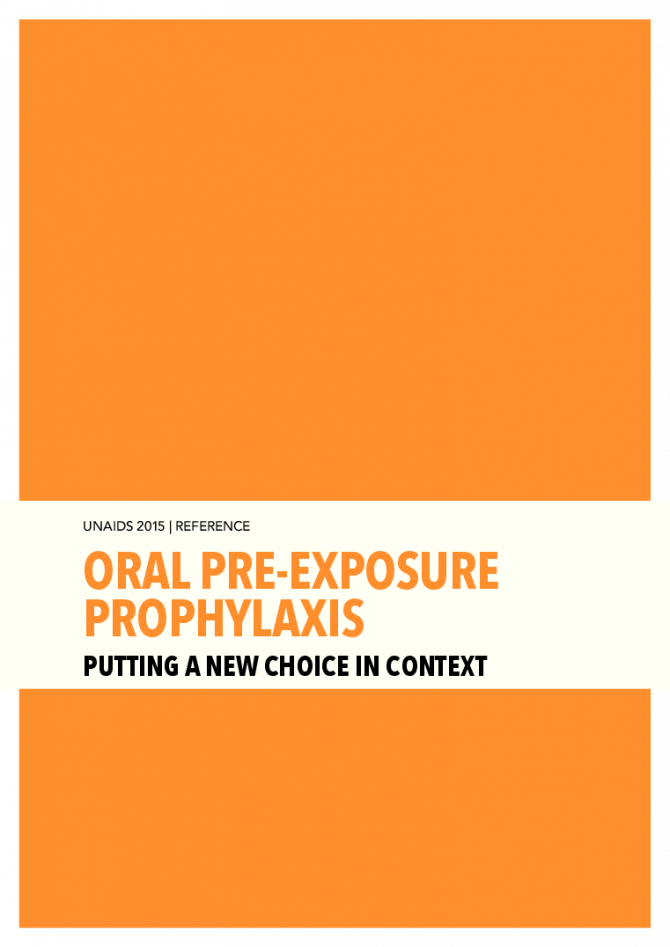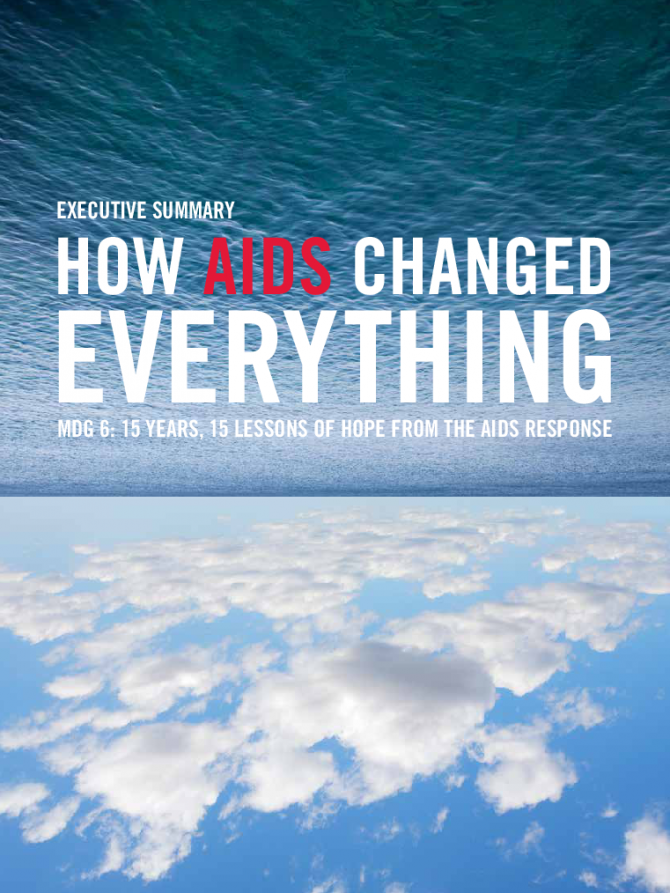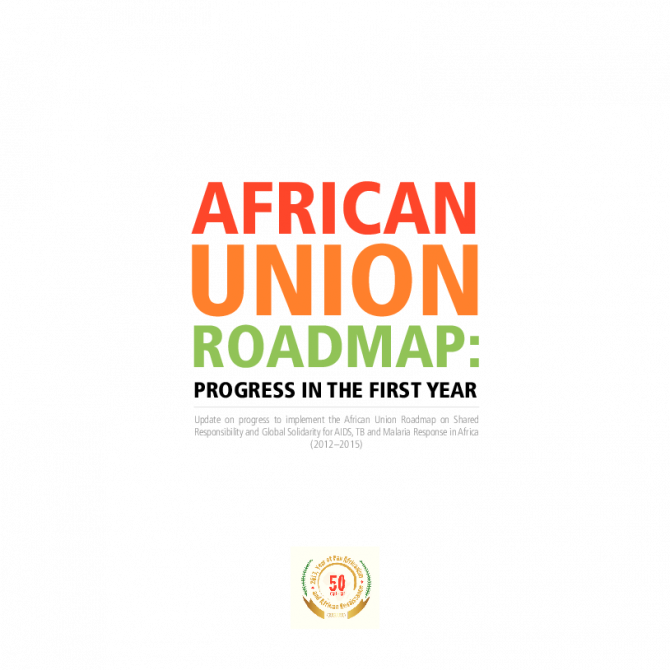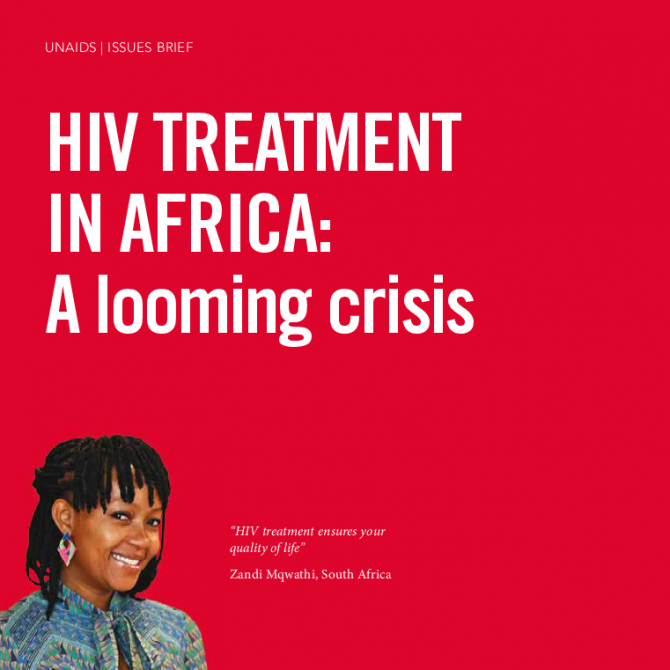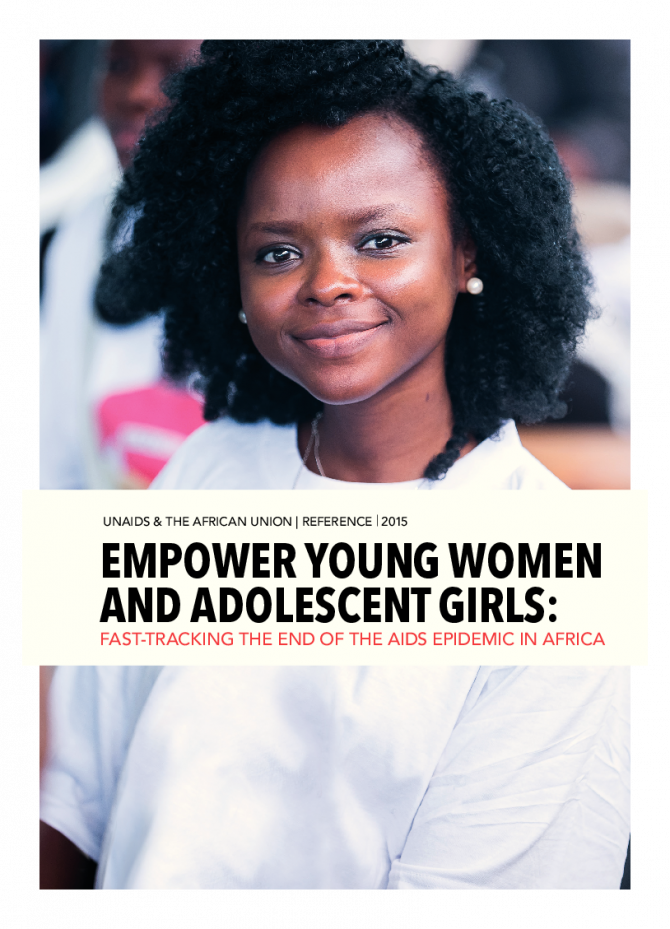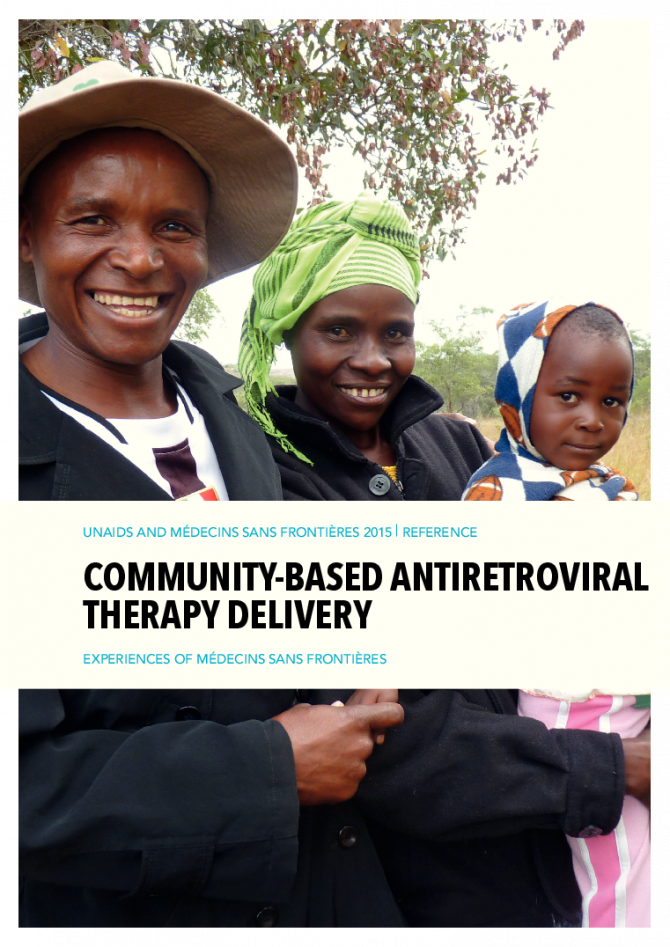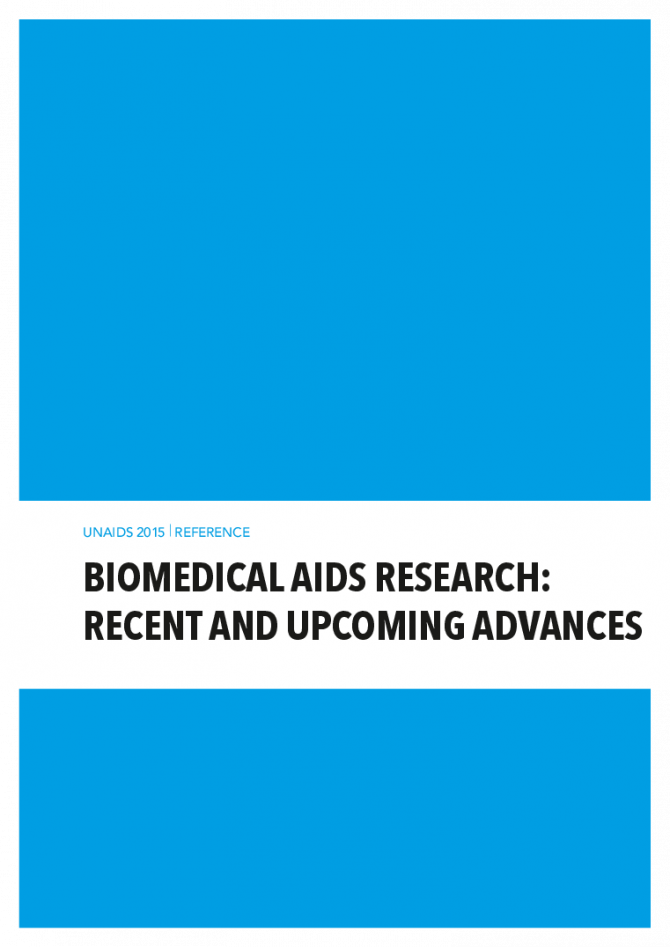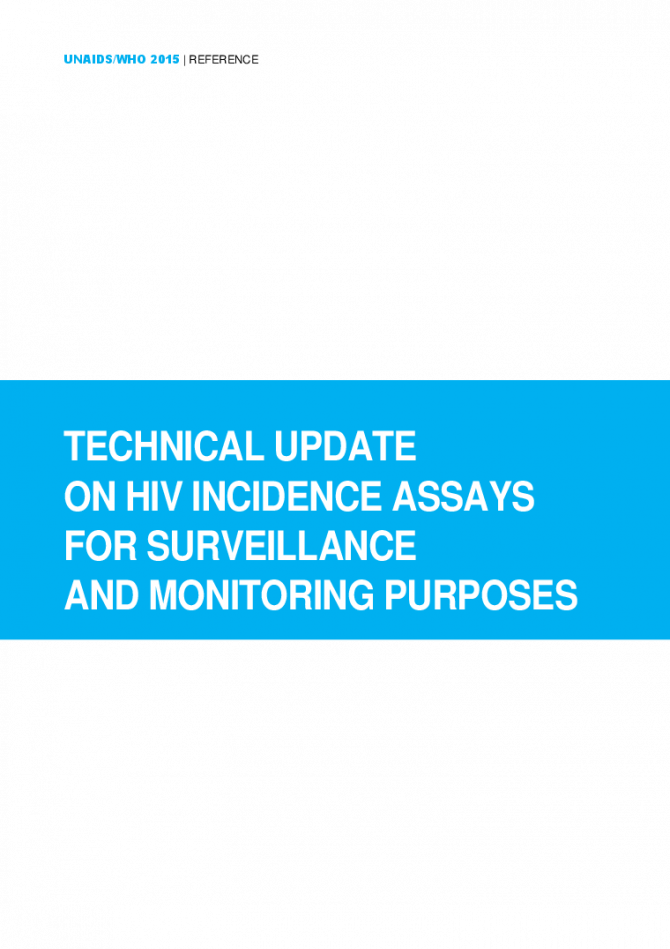Documents
“15 by 15” - a global target achieved
19 July 2015
Just as we have new opportunities that only a few years ago would have been inconceivable, we also now face new challenges. If the “15 by 15” success story has taught us anything, it is that we have in our hands the power to make the world healthier, more just and more equitable. We hope that this report not only reminds us of our power to change the world when we remain united, but also inspires us to take the actions needed to end the AIDS epidemic as a public health threat.
Documents
Oral pre-exposure prophylaxis–putting a new choice in context
12 July 2015
The World Health Organization (WHO) anticipates releasing updated guidance on oral pre-exposure prophylaxis (PrEP), containing tenofovir (TDF), as an additional HIV prevention choice. The new guidance is likely to be significantly broader than previously and creates real opportunities to move forward with implementing PrEP as part of comprehensive HIV programmes. This publication, produced collaboratively between UNAIDS, WHO and AVAC, is intended to complement WHO recommendations and support the optimal use of oral PrEP to protect individuals and contribute to ending the AIDS epidemic.
Documents
Executive summary: How AIDS changed everything — MDG6: 15 years, 15 lessons of hope from the AIDS response
14 July 2015
We have reached a defining moment in the AIDS response. Against all odds, we have achieved the AIDS targets of Millennium Development Goal 6. AIDS changed everything. In these pages are valuable insights and ground-breaking and heart-warming experiences from the innovative and exciting work that partners, communities and countries have done and are doing in the AIDS response. There are also heart-breaking stories about the challenges that still remain. More on How AIDS changed everything
Documents
African Union Roadmap: Progress in the first year
26 May 2013
The African Union Commission, in cooperation with UNAIDS, undertook to develop a practical guide to assist the African Union Member States, African regional bodies, the African Union Commission and other relevant stakeholders in implementing the Roadmap. The purpose of this guide is to provide practical ideas for how to take the agreed Roadmap agenda forward to achieve rapid results in both reducing the burden of these three diseases and in developing mechanisms to sustain national and regional programmes.
This guide is not a set of prescriptive formulas to be applied uniformly across all African Union Member States. Member States and regional economic communities are encouraged to adapt the suggested actions in this plan to their own contexts and needs, since each country and regional economic community is already carrying out certain interventions and is at different stages of implementing the Roadmap.
Documents
HIV treatment in Africa: A looming crisis
15 June 2015
Africa’s leadership on AIDS has sharply increased life expectancy and steadily reduced new HIV infections. Hopes are high, but these gains are at grave risk. Continued dependency on external AIDS funding and imported medicines and diagnostics threatens to put the future of AIDS beyond Africa’s control.
Documents
Empower young women and adolescent girls: Fast-Track the end of the AIDS epidemic in Africa
08 June 2015
Fast-tracking the end of the AIDS epidemic by 2030 requires strong political leadership and commitment to stop new infections and deaths among young women and adolescent girls and eliminate mother to child transmission of HIV. This requires building on, and extending Africa’s commitments on sexual and reproductive health and rights, expanding ministerial commitments on comprehensive sexuality education and stopping early marriage, adolescent pregnancy and expanding treatment service coverage.
Documents
Community-based antiretroviral therapy delivery: experiences from MSF
20 April 2015
This document presents experiences of how community-based antiretroviral therapy (ART) delivery can improve both the level of access to treatment and the quality of health outcomes for people living with HIV. These experiences illustrate that community-based ART delivery is efficient, effective and high quality. This document draws from several Médecins sans Frontières (MSF) reports and articles regarding its experiences with community-supported ART delivery.
Documents
Diagnostics access initiative to achieve the 90-90-90 treatment target
22 April 2015
The world is uniting around an ambitious HIV treatment target to lay the groundwork to end the AIDS epidemic as a public health threat by 2030. Through national, regional and global-level consultations, diverse stakeholders are pledging to ensure that by 2020: 90% of people living with HIV know their HIV status; 90% of people who know their status receive treatment; 90% of people on HIV treatment have a suppressed viral load.
Documents
Biomedical AIDS research: recent and upcoming advances
13 April 2015
The report is divided into an overview section that articulates the views of the Chair of the Scientific Expert Panel on the top 10 biomedical research advances in 2014 and five important research findings anticipated in 2015. Thereafter, the report provides brief summaries written almost entirely by Scientific Expert Panel members. The topics are divided into three main categories, advances in the treatment of HIV and comorbidities; advances in HIV prevention; and advances in HIV pathogenesis, diagnostics and cure. Linked to each summary is a bibliography that provides a list of key articles for further reading.
Documents
Technical update on HIV incidence assays for surveillance and monitoring purposes
01 April 2015
This document is intended for epidemiologists, statisticians and laboratory technicians responsible for the use of HIV incidence assays for surveillance and epidemic monitoring purposes. People that are not technical experts in this field may prefer to first read the UNAIDS/WHO Working Group on Global HIV/AIDS and STI Surveillance published guidelines on When and How to Use Assays for Recent Infection to Estimate HIV Incidence at a Population Level for a basic introduction to this topic.


